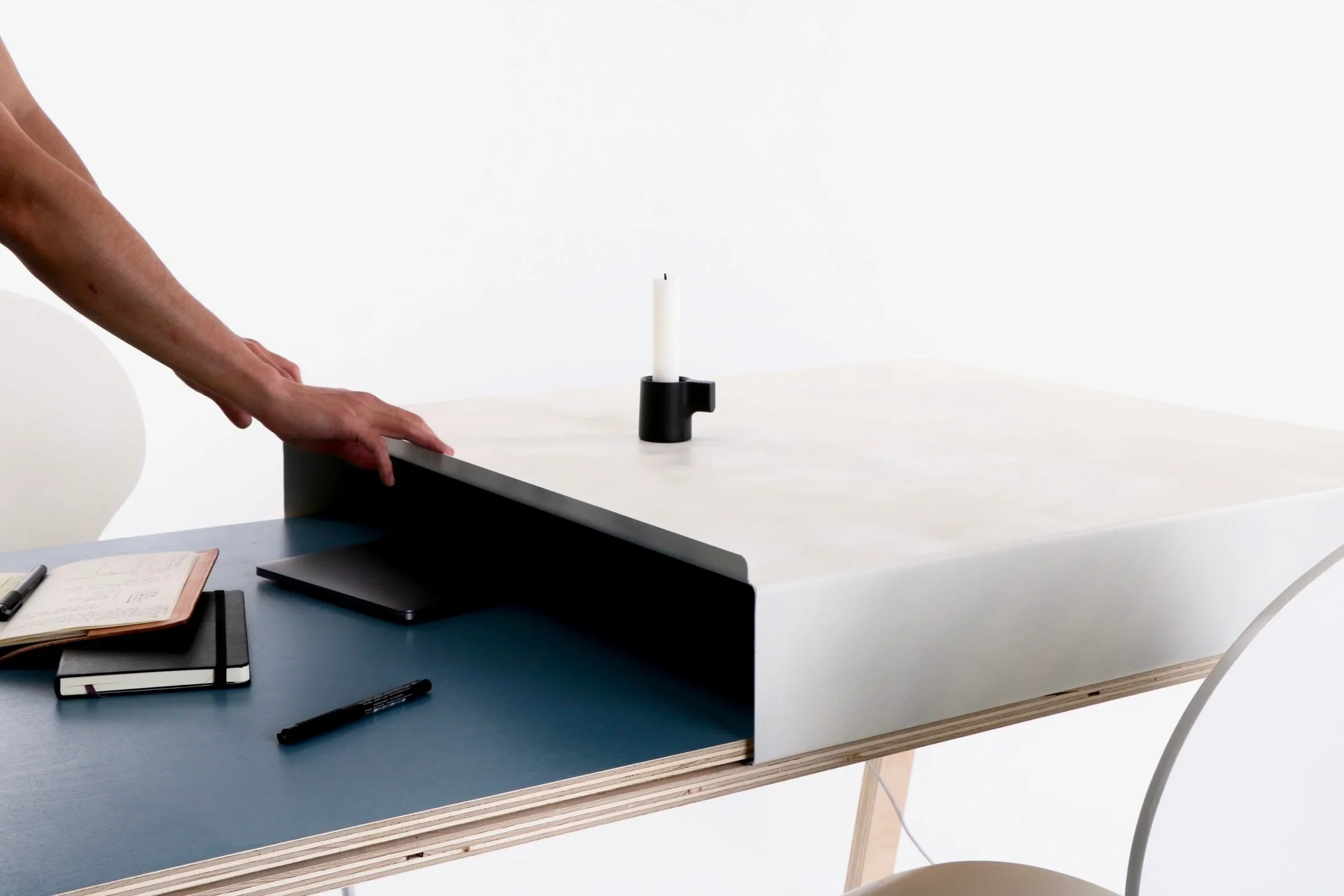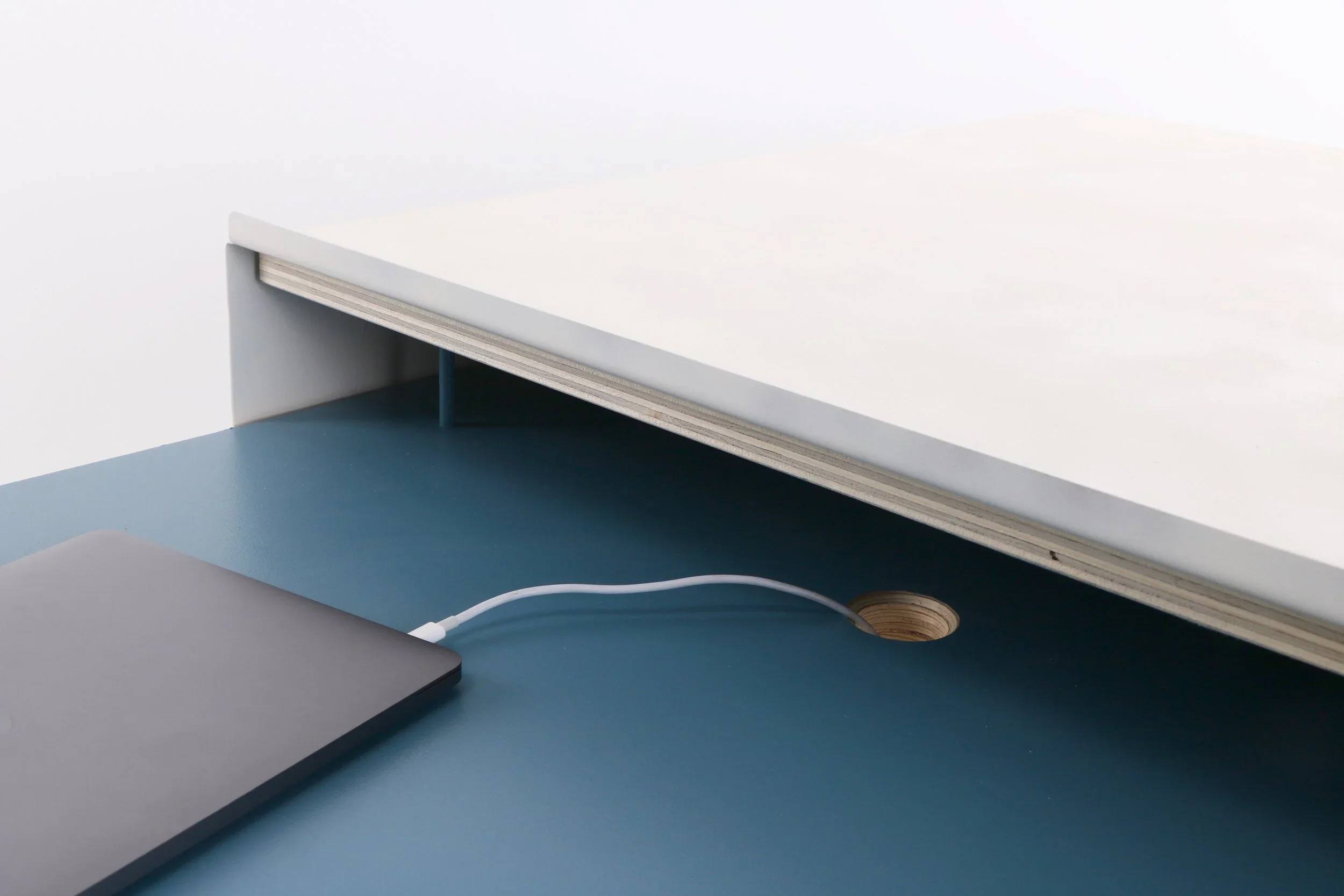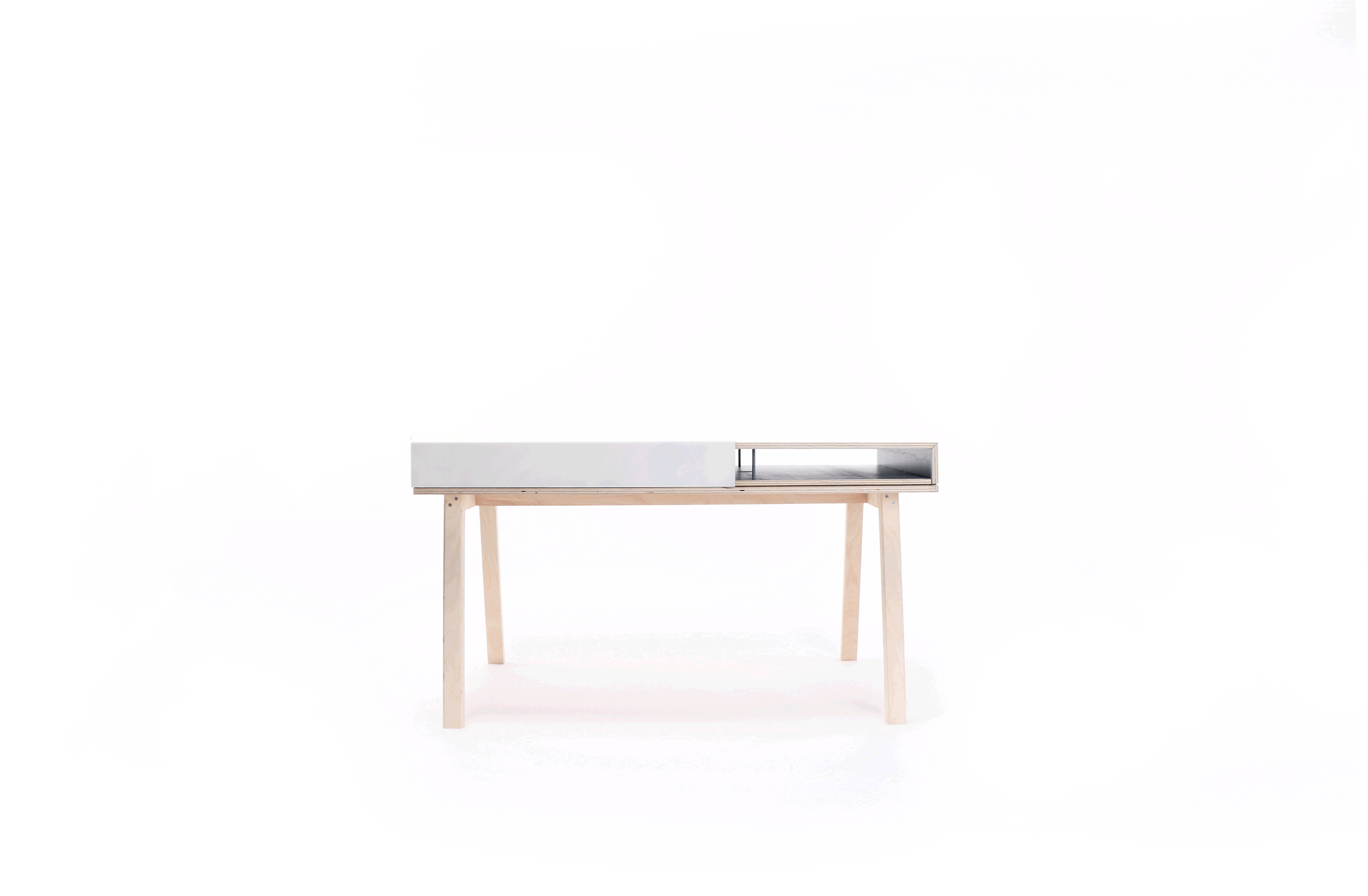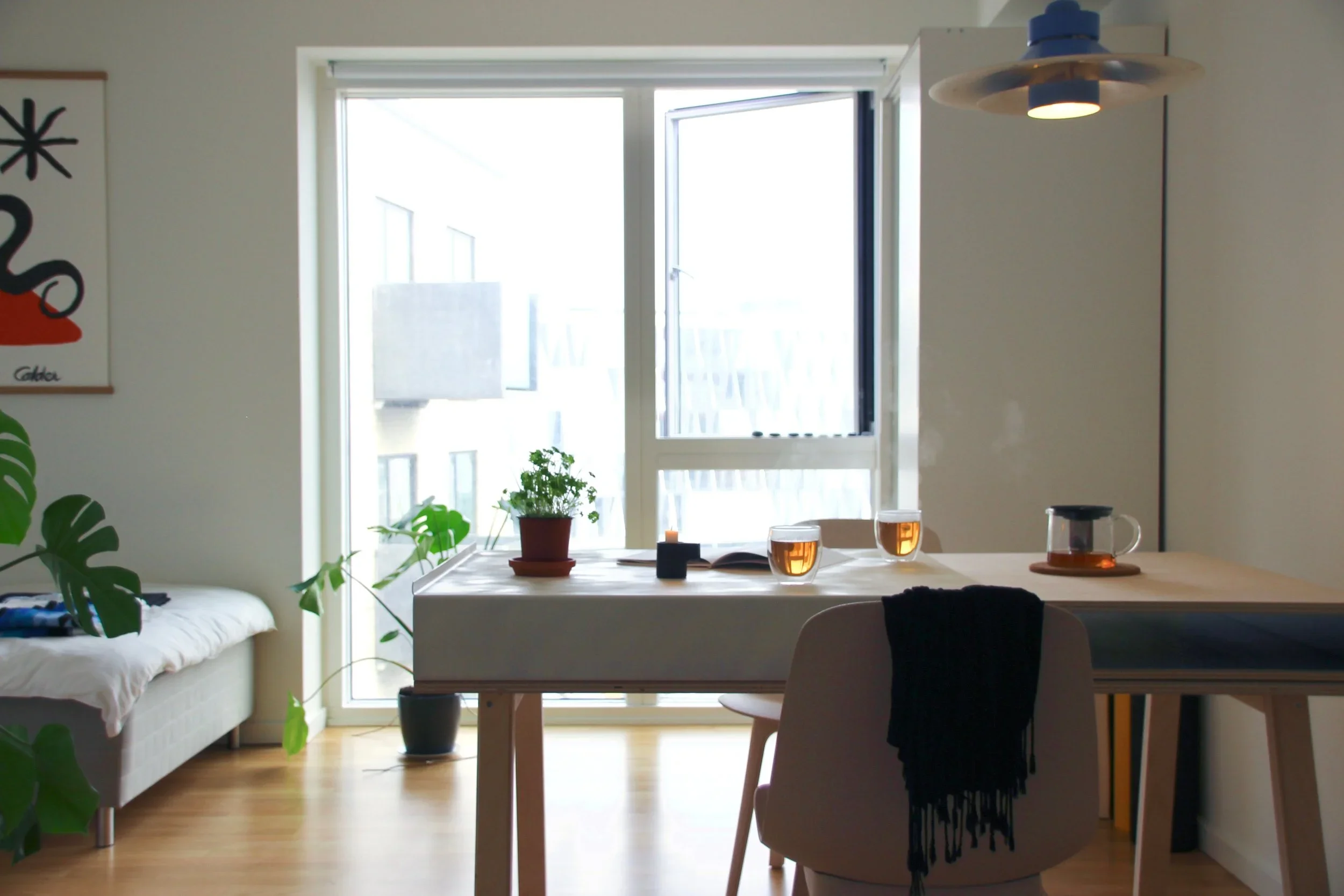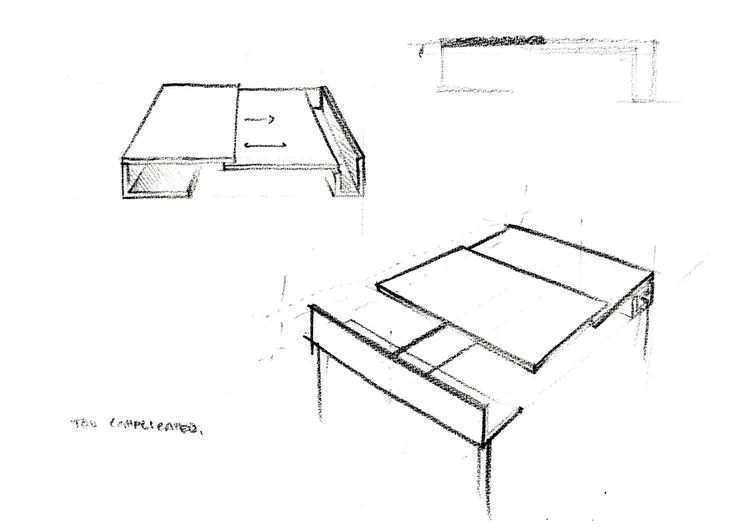TÄBLE
Designskolen Kolding in collaboration with IKEA
This was a 2-person team project with Martin Dalstrup
TÄBLE is a flexible surface for modern living, challenging what it means to be a “dining table” in homes today, and considers the many activities and tasks which it must support. It provides users with a flexible table space which supports a modern lifestyle, by creating smooth transitions between activities and encouraging the user to interact with the space through playful manipulation and exploration through simple and effective cues. TÄBLE is designed in consideration of Democratic Design Principles, and fosters togetherness and playfulness for the user(s) in a “serious” product outcome.
Assembly:
As IKEA prefers to flatpack their products both for more sustainable and cheaper shipping, we made sure that TÄBLE aligned with these values. TÄBLE’s legs can be removed and can pack together inside of the upper table top to be packed flat in a box. The legs can later be removed and easily assembled by the users.
Dimensions:
TÄBLE is the standard IKEA size for a small 4-person dining table. The concept could, however, be adapted to many tables of different sizes, depending upon the users’ needs. The height of the two tabletops was determined by both standard table heights for desks and formal dining tables, as well as through user testing to ensure comfort.
Process:
Though we were presented with a wide brief, we were able to identify a problem to solve for through discussions with both users and IKEA designers in Ålmhut, Sweden. Further ethnographic studies and analysis of user-provided media helped us to understand the user’s needs and desires. Rapid and full-scale prototyping allowed us to interact with the object on a 1:1 scale.
Insights + Research:
Through analyzing user-provided media and conducting in-depth interviews we determined that the traditional dining table is not optimized for homes today, and therfore developed the question: “How might we facilitate seamless transitions between multi-use space in the home?” Finally, we identified 5 considerations to keep in mind throughout the design process:
Smaller Homes: Where we live is becoming more compact as people move to cities and rent prices rise.
More distractions: Technology is bringing work, and other distractions, into the home.
Fewer activity-specific spaces: As homes become smaller, there are no longer dedicated areas to singular activities, instead users opt for multi-use spaces.
Playfulness as an attitude: Playfulness is a way of engaging with the world derived from our capacity to play.
Encouraging togetherness: Being present in the moment allows us to spend quality time together.
